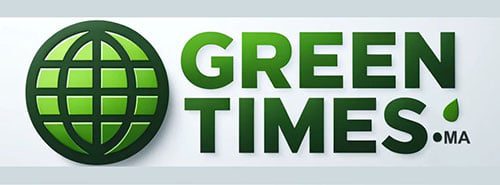LG Electronics (LG) has published its Sustainable Development Report 2024–2025, highlighting significant progress made towards achieving its environmental goals by 2030, particularly in reducing greenhouse gas emissions and improving resource circularity. This report showcases the numerous initiatives undertaken to make sustainability a central pillar of its operations, in line with its vision of a “better life for all.”
In 2024, LG’s direct (Scope 1) and indirect (Scope 2) emissions totaled 910,000 tons of CO₂ equivalent, close to its target of 878,000 tons by 2030. Through the proactive adoption of high-energy-efficiency equipment and carbon reduction technologies, LG is on track to meet this goal ahead of schedule.
Furthermore, the company has made notable progress in reducing Scope 3 emissions associated with the use of its products, notably through the increased integration of artificial intelligence and energy-saving technologies. In 2024, LG reduced carbon emissions related to its products by 19.4% compared to 2020. LG is also the first South Korean home appliance manufacturer to have its reduction targets validated by the Science Based Targets initiative (SBTi), including a targeted 20% reduction in Scope 3 emissions by 2030 across seven key categories.
The company’s efforts in circularity are equally impressive. In 2024, LG achieved a recycling rate of 97.4% for waste at its global production sites, surpassing the 95% target set for 2030. The company collected 532,630 tons of used electronics from 91 locations across 56 countries, bringing the total since 2006 to over 5 million tons. Additionally, the amount of recycled plastic used in LG products increased by 36% in one year.
LG also continues its accessibility initiatives with the LG Comfort Kit, which facilitates the use of its devices regardless of users’ age, gender, or abilities, now including 14 products. Features include screen reading, simultaneous audio output for hearing aids and speakers on OLED televisions, as well as height-adjustable interactive kiosks. The company offers inclusive services such as support programs for people with disabilities, sign language consultations, senior assistance, and in-store workshops on safety, computing, and culture.
In terms of governance, LG is enhancing its practices through a compliance and ethics-based organization. Its board of directors operates on principles of independence, expertise, and transparency, while the ESG Committee plays a central role in driving sustainable initiatives. In its supply chain, LG promotes shared growth through third-party ESG audits that align with the standards of the Responsible Business Alliance (RBA).
These efforts have led to LG being ranked for the second consecutive year in the “Top 1%” of the Corporate Sustainability Assessment (CSA) by S&P Global. The company also received an “A” rating from MSCI for the fifth consecutive year and has been listed in the Dow Jones “Best-in-Class World” index for 13 years.
In summary:
– LG becomes the first South Korean home appliance manufacturer to have its climate targets validated by the Science Based Targets initiative (SBTi).
– For the second consecutive year, the company ranks in the top 1% globally in S&P Global’s sustainability ranking.
– LG is on track to achieve its greenhouse gas emissions reduction target of 54.6% by 2030 sooner than expected.
– With a recycling rate of 97.4% at its production sites, LG is already exceeding its environmental commitments.


